Ultrahigh dielectric permittivity in oxide ceramics by hydrogenation
- PMID: 36827373
- PMCID: PMC9956132
- DOI: 10.1126/sciadv.add8328
Ultrahigh dielectric permittivity in oxide ceramics by hydrogenation
Abstract
Boosting dielectric permittivity representing electrical polarizability of dielectric materials has been considered a keystone for achieving scientific breakthroughs as well as technological advances in various multifunctional devices. Here, we demonstrate sizable enhancements of low-frequency dielectric responses in oxygen-deficient oxide ceramics through specific treatments under humid environments. Ultrahigh dielectric permittivity (~5.2 × 106 at 1 Hz) is achieved by hydrogenation, when Ni-substituted BaTiO3 ceramics are exposed to high humidity. Intriguingly, thermal annealing can restore the dielectric on-state (exhibiting huge polarizability in the treated ceramics) to the initial dielectric off-state (displaying low polarizability of ~103 in the pristine ceramics after sintering). The conversion between these two dielectric states via the ambient environment-mediated treatments and the successive application of external stimuli allows us to realize reversible control of dielectric relaxation characteristics in oxide ceramics. Conceptually, our findings are of practical interest for applications to highly efficient dielectric-based humidity sensors.
Figures

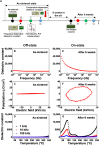
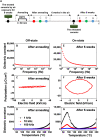
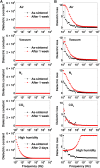
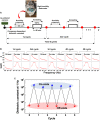
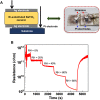
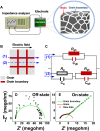

References
-
- J.-K. Huang, Y. Wan, J. Shi, J. Zhang, Z. Wang, W. Wang, N. Yang, Y. Liu, C.-H. Lin, X. Guan, L. Hu, Z.-L. Yang, B.-C. Huang, Y.-P. Chiu, J. Yang, V. Tung, D. Wang, K. Kalantar-Zadeh, T. Wu, X. Zu, L. Qiao, L.-J. Li, S. Li,High-κ perovskite membranes as insulators for two-dimensional transistors. Nature 605,262–267 (2022). - PubMed
-
- A. I. Kingon, J.-P. Maria, S. K. Streiffer,Alternative dielectrics to silicon dioxide for memory and logic devices. Nature 406,1032–1038 (2000). - PubMed
-
- S. Krohns, P. Lunkenheimer, S. Meissner, A. Reller, B. Gleich, A. Rathgeber, T. Gaugler, H. U. Buhl, D. C. Sinclair, A. Loidl,The route to resource-efficient novel materials. Nat. Mater. 10,899–901 (2011). - PubMed
-
- S. C. B. Mannsfeld, B. C. K. Tee, R. M. Stoltenberg, C. V. Chen, S. Barman, B. V. O. Muir, A. N. Sokolov, C. Reese, Z. Bao,Highly sensitive flexible pressure sensors with microstructured rubber dielectric layers. Nat. Mater. 9,859–864 (2010). - PubMed
-
- W. H. Ko, Q. Wang,Touch mode capacitive pressure sensors. Sens. Actuator A Phys. 75,242–251 (1999).
LinkOut - more resources
Full Text Sources

